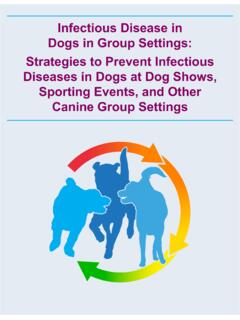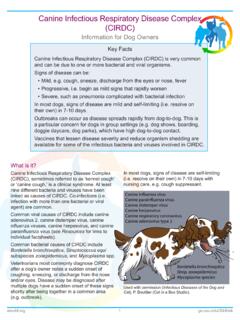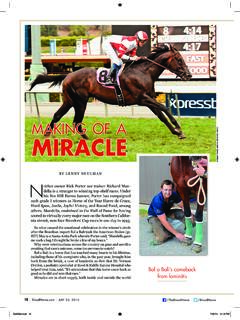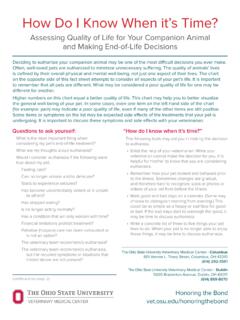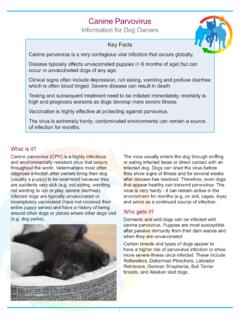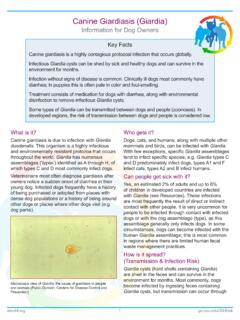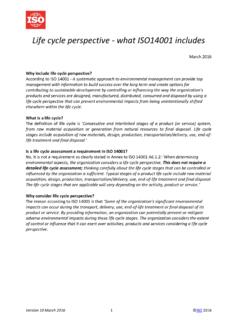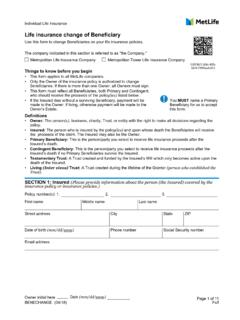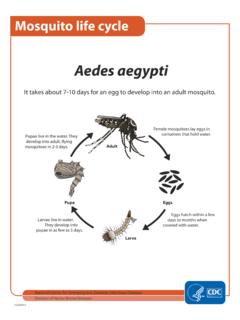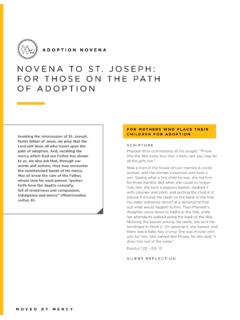Transcription of Quality of Life Checklist - Ohio State University
1 The Ohio State University Veterinary Medical Center Honoring the Bond Agree (All the Time) (Severe)Agree (Most of the Time) (Significant)Neutral (Sometimes) (Mild)Disagree (Occasionally) (Slight)Strongly Disagree (Never) (None)does not want to play12345does not respond to my presence or does not interact with me in the same way as before12345does not enjoy the same activities as before 12345is hiding12345demeanor/behavior is not the same as it was prior to diagnosis/illness 12345does not seem to enjoy life12345has more bad days than good days 12345is sleeping more than usual 12345seems dull and depressed 12345seems to be or is experiencing pain12345is panting (even while resting)12345is trembling or shaking12345is vomiting and/or seems nauseous12345is not eating well - (may only be eating treats or only if fed by hand)12345is not drinking well 12345is losing weight12345is having diarrhea often12345is not urinating well 12345is not moving normally12345is not as active as normal12345does not move around as needed 12345needs my help to move around normally 12345is unable to keep self clean after soiling12345has coat that is greasy, matted, or rough-looking12345 How is my pet s overall health compared to the initial diagnosis/illness?
2 1 Worse23 Same45 BetterCurrent Quality of life (place X along the line that best fits your pet s Quality of life ) Poor GoodThis scale has been adapted, with permission, from The HHHHHMM Quality of life Scale: Dr. Alice Villalobos; Quality of life Survey: Dr. David Vail; End-of- life Values and Goals worksheet: University of Tennessee Veterinary Social WorkDeciding to euthanize your companion animal may be one of the most difficult decisions you ever make. Often, well-loved pets are euthanized to minimize unnecessary suffering. The Quality of animals lives is defined by their overall physical and mental well-being, not just one aspect of their lives. The following chart attempts to consider all aspects of your pet s life .
3 It is important to remember that all pets are different. What may be considered a poor Quality of life for one may be different for numbers on this chart equal a better Quality of life . This chart may help you to better visualize the general well-being of your pet. In some cases, even one item on the left-hand side of the chart (for example: pain) may indicate a poor Quality of life , even if many of the other items are still positive. Some items or symptoms on the list may be expected side effects of the treatments that your pet is undergoing. It is important to discuss these symptoms and side effects with your Date:Weight:Poor Quality of LifeGood Quality of Lif
